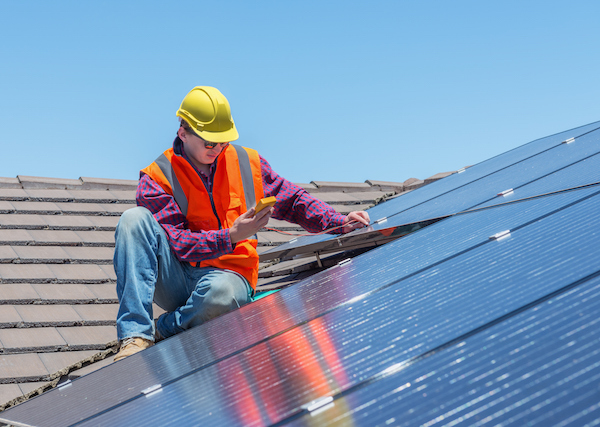
Solar panels are a quiet and efficient way to generate low-cost electricity for your home — even on cloudy days. Coupled with tax incentives and rebates, adding solar panels to your home is cheaper and easier than ever.
Heating and cooling account for about 56 percent of the energy used in a typical American home, according to the U.S. Department of Energy. Which is why more homeowners are going green every day. Environmentally friendly building, remodeling and decorating can go a long way in decreasing our energy consumption, which can have a major positive impact on our wallets and the world around us.
1. Here to stay
Going green is not a trend. Nine out of 10 recent homebuyers say heating and cooling costs were either “somewhat” or “very” important in choosing a home to purchase, according to a 2013 survey by the National Association of Realtors. Twenty-four percent of survey-takers also said energy-efficient appliances and lighting were important. The survey also showed that buyers in the North and South placed a greater weight on heating and cooling costs, while new homebuyers found more value in environmentally friendly features than those who purchased existing homes.
2. The green designation
In 2008, the National Association of Realtors launched the Green Designation, which has provided training to about 9,000 real estate professionals. The specialized training is focused on marketing homes with green features and building sustainable business practices. Real estate professionals are equipped with knowledge of features, strategies and even funding opportunities related to green living.
3. Tax breaks
The federal government is doing its part to convince home and business owners to think green. Established by the Energy Policy Act of 2005, the federal tax credit for residential energy property now applies to solar-electric systems, solar water-heating systems, fuel cells, small wind-energy systems and geothermal heat pumps. The credit is available until Dec. 31, 2016, and allows a taxpayer to claim a credit of 30 percent of qualified system expenditures, which include labor costs for on-site preparation, assembly or original system installation and piping or wiring to interconnect a system to the home.





